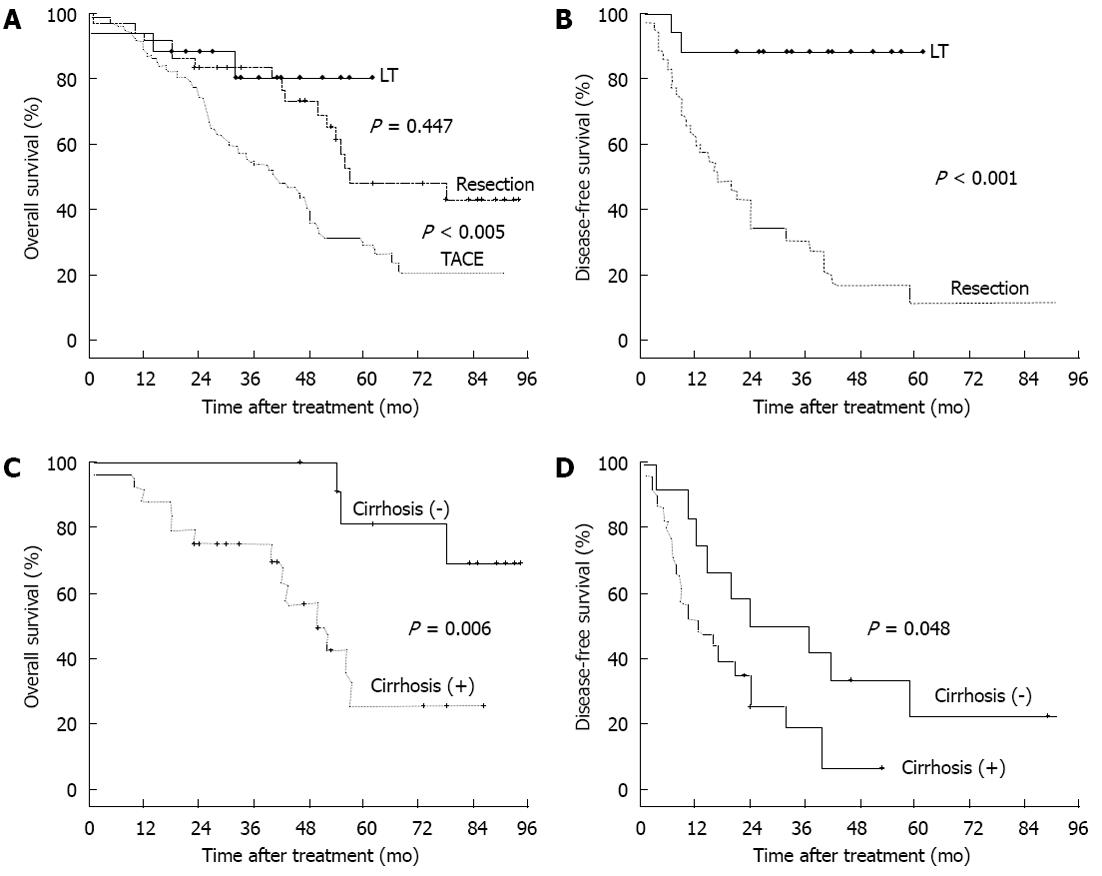Copyright
©2013 Baishideng Publishing Group Co.
World J Gastroenterol. Jan 21, 2013; 19(3): 366-374
Published online Jan 21, 2013. doi: 10.3748/wjg.v19.i3.366
Published online Jan 21, 2013. doi: 10.3748/wjg.v19.i3.366
Figure 1 The overall and disease-free survival curves according to treatment modality and presence of liver cirrhosis in surgical resection patients.
A: The 1-, 3- and 5-year overall survival (OS) rates were 94.1%, 80.2% and 80.2%, respectively, in the liver transplantation (LT) group; 91.7%, 83.3% and 48.1%, respectively, in the resection group; and 88.7%, 55.6% and 28.9%, respectively, in the transarterial chemoembolization (TACE) group. The OS rate was significantly higher in the surgical resection group than in the TACE group (P < 0.005). LT showed the best OS rate (better than the surgical resection group, but not statistically significant, P = 0.447); B: The 1-, 3- and 5-year disease-free survival rates were 88.2%, 88.2% and 88.2% in the LT group and 60%, 30.3% and 11.2% in the resection group, respectively. The disease-free survival rates were also significantly higher in the transplantation group than in the surgical resection group (P < 0.001); C: The 1-, 3- and 5-year OS rates were 100%, 100% and 80.8% in patients without cirrhosis (-) and 87.5%, 75% and 25.5% in patients with cirrhosis (+), respectively (P = 0.006); D: The 1-, 3- and 5-year disease-free survival rates were 75.0%, 50.0% and 22.2% in patients without cirrhosis (-) and 52.3%, 18.7% and 0% in patients with cirrhosis (+), respectively (P = 0.048).
- Citation: Choi SH, Choi GH, Kim SU, Park JY, Joo DJ, Ju MK, Kim MS, Choi JS, Han KH, Kim SI. Role of surgical resection for multiple hepatocellular carcinomas. World J Gastroenterol 2013; 19(3): 366-374
- URL: https://www.wjgnet.com/1007-9327/full/v19/i3/366.htm
- DOI: https://dx.doi.org/10.3748/wjg.v19.i3.366









